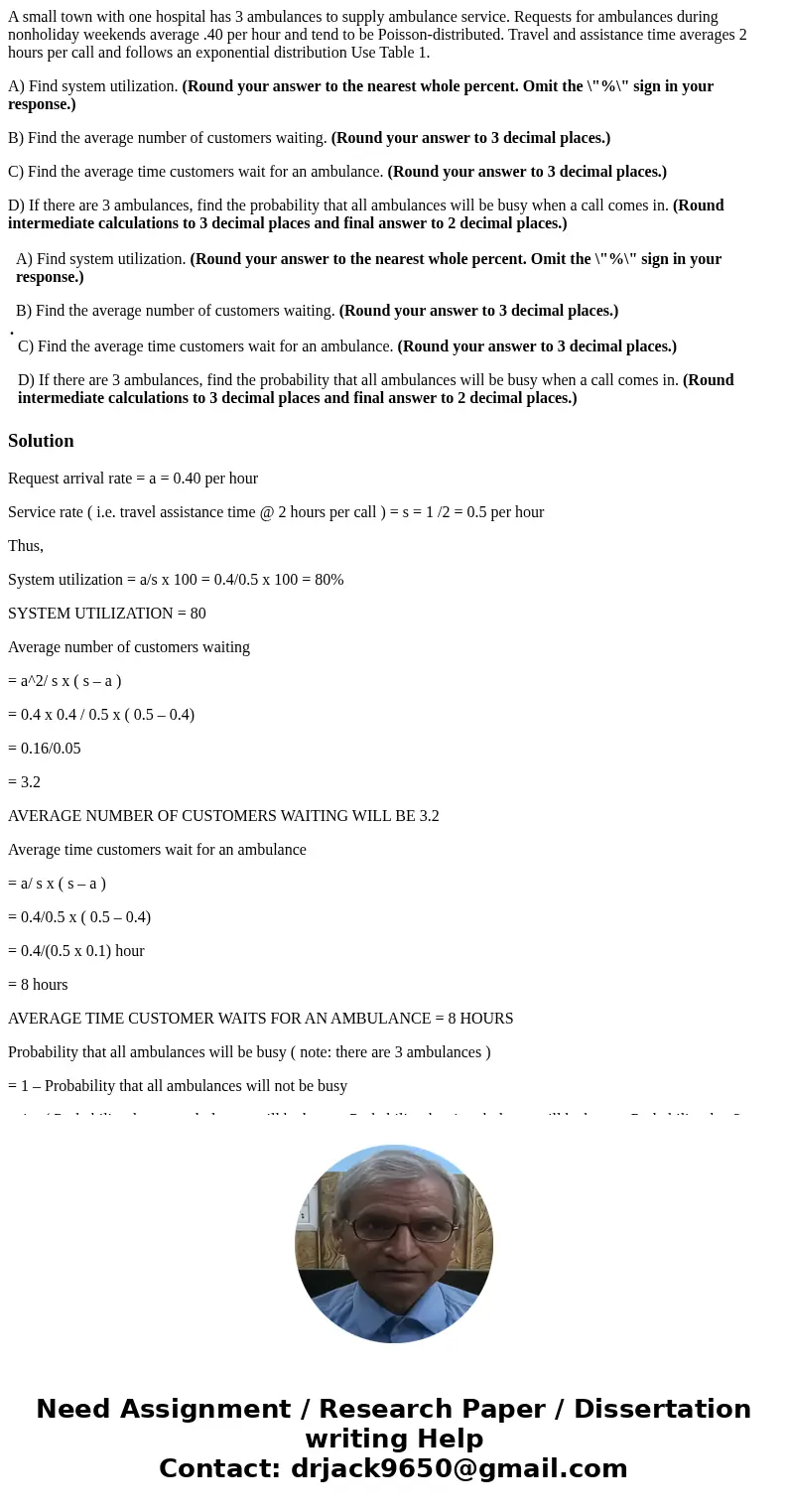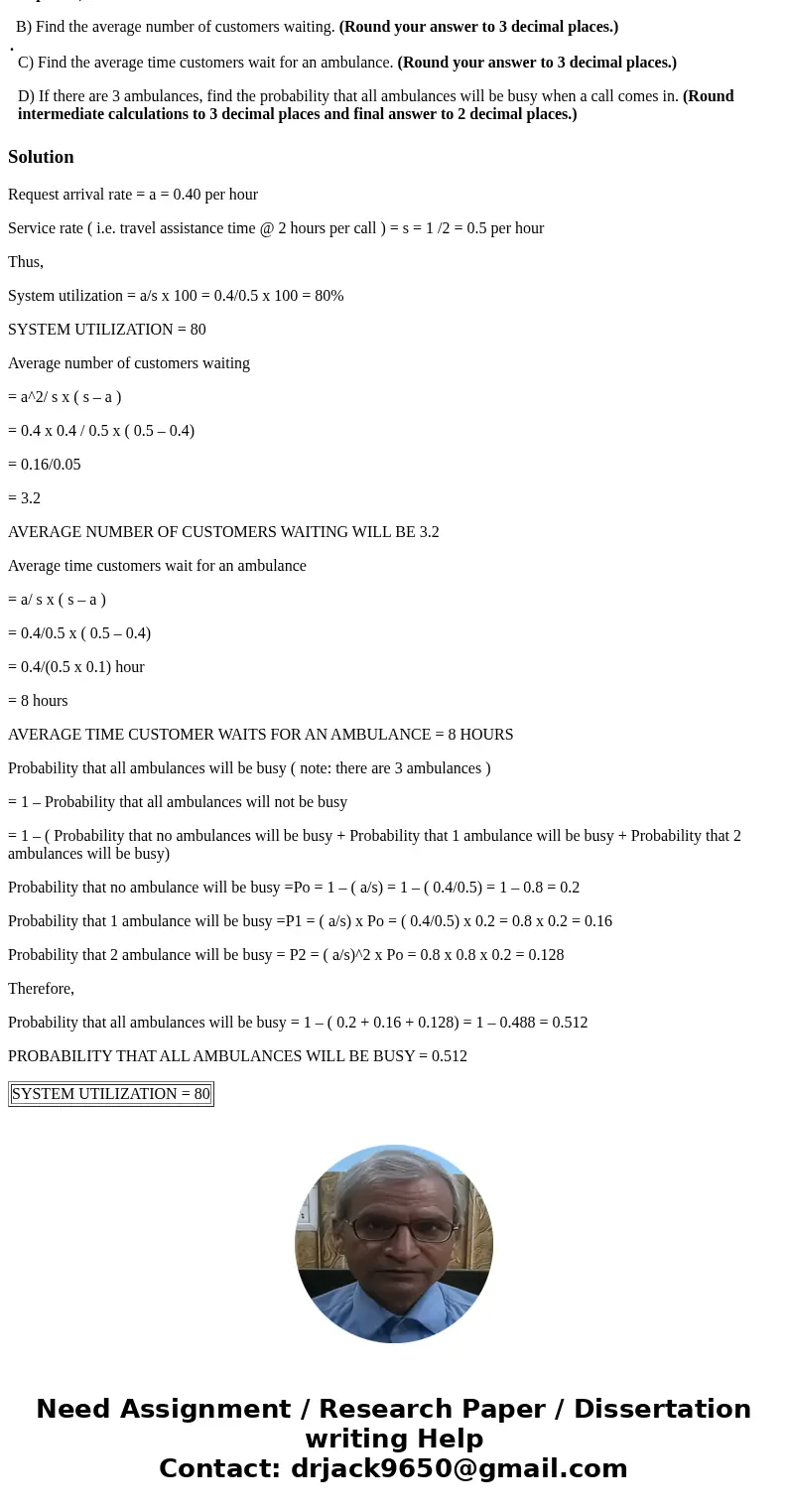A small town with one hospital has 3 ambulances to supply am
A small town with one hospital has 3 ambulances to supply ambulance service. Requests for ambulances during nonholiday weekends average .40 per hour and tend to be Poisson-distributed. Travel and assistance time averages 2 hours per call and follows an exponential distribution Use Table 1.
A) Find system utilization. (Round your answer to the nearest whole percent. Omit the \"%\" sign in your response.)
B) Find the average number of customers waiting. (Round your answer to 3 decimal places.)
C) Find the average time customers wait for an ambulance. (Round your answer to 3 decimal places.)
D) If there are 3 ambulances, find the probability that all ambulances will be busy when a call comes in. (Round intermediate calculations to 3 decimal places and final answer to 2 decimal places.)
| . | A) Find system utilization. (Round your answer to the nearest whole percent. Omit the \"%\" sign in your response.) B) Find the average number of customers waiting. (Round your answer to 3 decimal places.)
|
Solution
Request arrival rate = a = 0.40 per hour
Service rate ( i.e. travel assistance time @ 2 hours per call ) = s = 1 /2 = 0.5 per hour
Thus,
System utilization = a/s x 100 = 0.4/0.5 x 100 = 80%
SYSTEM UTILIZATION = 80
Average number of customers waiting
= a^2/ s x ( s – a )
= 0.4 x 0.4 / 0.5 x ( 0.5 – 0.4)
= 0.16/0.05
= 3.2
AVERAGE NUMBER OF CUSTOMERS WAITING WILL BE 3.2
Average time customers wait for an ambulance
= a/ s x ( s – a )
= 0.4/0.5 x ( 0.5 – 0.4)
= 0.4/(0.5 x 0.1) hour
= 8 hours
AVERAGE TIME CUSTOMER WAITS FOR AN AMBULANCE = 8 HOURS
Probability that all ambulances will be busy ( note: there are 3 ambulances )
= 1 – Probability that all ambulances will not be busy
= 1 – ( Probability that no ambulances will be busy + Probability that 1 ambulance will be busy + Probability that 2 ambulances will be busy)
Probability that no ambulance will be busy =Po = 1 – ( a/s) = 1 – ( 0.4/0.5) = 1 – 0.8 = 0.2
Probability that 1 ambulance will be busy =P1 = ( a/s) x Po = ( 0.4/0.5) x 0.2 = 0.8 x 0.2 = 0.16
Probability that 2 ambulance will be busy = P2 = ( a/s)^2 x Po = 0.8 x 0.8 x 0.2 = 0.128
Therefore,
Probability that all ambulances will be busy = 1 – ( 0.2 + 0.16 + 0.128) = 1 – 0.488 = 0.512
PROBABILITY THAT ALL AMBULANCES WILL BE BUSY = 0.512
| SYSTEM UTILIZATION = 80 |


 Homework Sourse
Homework Sourse